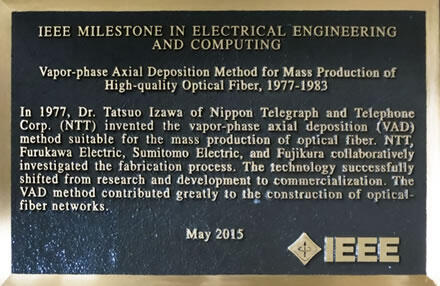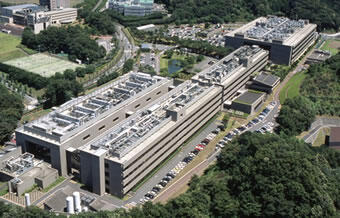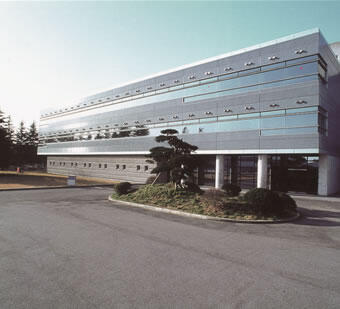Microsoft ends support for Internet Explorer on June 16, 2022.
We recommend using one of the browsers listed below.
- Microsoft Edge(Latest version)
- Mozilla Firefox(Latest version)
- Google Chrome(Latest version)
- Apple Safari(Latest version)
Please contact your browser provider for download and installation instructions.
June 9, 2015
Nippon Telegraph and Telephone Corporation
Furukawa Electric Co., Ltd.
Sumitomo Electric Industries, Ltd.
Fujikura Ltd.
The VAD Method is Recognized as a Prestigious IEEE Milestone for the Excellent Mass Production of High-quality Optical Fiber Indispensable for Building Optical Communication Networks
Nippon Telegraph and Telephone Corporation (NTT, Chiyoda-ku, Tokyo, President and CEO: Hiroo Unoura), Furukawa Electric Co., Ltd. (Furukawa Electric, Chiyoda-ku, Tokyo, President: Mitsuyoshi Shibata), Sumitomo Electric Industries, Ltd. (Sumitomo Electric, Chuo-ku, Osaka, President: Masayoshi Matsumoto), and Fujikura Ltd. (Fujikura, Koto-ku, Tokyo, President and CEO, Yoichi Nagahama) have received a prestigious IEEE Milestone award in Electrical Engineering and Computing from the Institute of Electrical and Electronics Engineers (IEEE)*1 in recognition for achieving the vapor-phase axial deposition (VAD) method, which is an excellent technique for the mass production of high-quality optical fiber*2. The collaborative research and development they undertook contributed to a worldwide acceleration in the construction of optical communication networks.
The 1970s saw active worldwide research on glass optical fiber because it was expected to provide an optical transmission medium for long-distance communication. In Japan in 1975, NTT (then, Nippon Telegraph and Telephone Public Corporation), Furukawa Electric, Sumitomo Electric, and Fujikura (then,Fujikura Insulated Wire & Cable Company) established a joint research and development (R&D) team and started working together with the aim of developing practical silica-glass optical fiber. Then in 1977, during the course of this collaborative work, the vapor-phase axial deposition (VAD) method was invented, which proved to be highly suitable for the mass production of optical fiber.
The invention of the VAD method and the collaborative efforts to improve the fabrication process undertaken by the four companies established the basis for the low-cost mass production of high-quality optical fiber and successfully shifted the technology from R&D to commercialization. The VAD method is currently the most used optical fiber manufacturing method and accounts for approximately 60% of the optical fiber employed for telecommunications in the world. Thus, the VAD method has contributed greatly to the building of the optical telecommunication networks that support our advanced information and communication society.
NTT, Furukawa Electric, Sumitomo Electric, and Fujikura will continue to commit to the advancement of society, industry, and academia through their world-leading technology, and to contribute to the creation of a safe, secure and prosperous society.
The VAD method is described in detail in the attachment.
About IEEE Milestones
The "IEEE Milestone" was established by the IEEE in 1983 as a way of honoring significant historic achievements of innovative technologies in the field of electrical and electronic engineering, information and communication. The technology must be at least 25 years old and its achievement must have a high global reputation.
Some examples of dedicated IEEE Milestones include historic facilities and technologies of the 19th century such as the telephone, the Edison Laboratory*3, and Marconi's wireless telegraphy*4, which formed the basis of modernization and 20th century developments such as televisions, computers and the internet, which support our current information and communication society.
The joint development and diffusion of "International standardization of G3 facsimile, 1980"*5 by KDDI and NTT and of "Line spectrum pair (LSP) for high-compression speech coding, 1975"*6 by NTT were recognized as IEEE milestones in April 2012 and May 2014, respectively. A list of dedicated IEEE Milestones in Japan is shown in the Reference.
Plaque sites
The IEEE Milestone plaques (Photo 1) presented by the IEEE are permanently exhibited at NTT Atsugi R&D Center (Atsugi-Shi, Kanagawa Pref., Photo 2), Furukawa Electric Mie Works (Kameyama-Shi, Mie Pref., Photo 3), Sumitomo Electric Osaka Works (Osaka-Shi, Photo 4), Fujikura Sakura Works (Sakura-Shi, Chiba Pref., Photo 5). These sites are related to the achievement of the VAD method in terms of its R&D and/or optical fiber production.
Attachment
The VAD method
Optical fiber for communication is fabricated by drawing a string of fiber from a glass cylinder called a preform while it is being heated. If the optical fiber is to be widely used in an optical fiber communication system, it must exhibit a low optical propagation loss and its fabrication method should allow mass production. The development of a method for manufacturing large optical fiber glass preforms relatively quickly was a key issue as regards the mass production of optical fiber.
With the VAD method, a porous glass preform is fabricated by the deposition of fine glass material (SiO2-GeO2)*7 onto the end surface of a starting material (silica glass rod) via flame hydrolysis. This is used as a seed from which to form an inner deposition part*8 whose outer part*9 is covered with SiO2 glass fine particles also via flame hydrolysis. The starting rod is pulled upward in the axial direction and the porous preform is grown in the same direction. This process allows the growth of a long and large-diameter porous preform. The porous preform is then heated to create a transparent fiber preform. Optical fiber is obtained by drawing the fiber preform. Figure 1 shows the fabrication process of the VAD method.
Other well-known glass preform fabrication methods include modified chemical vapor deposition (MCVD)*10 and outside-vapor deposition (OVD)*11. The MCVD method is suitable for fabricating low-loss optical fiber because its fabrication method has a feature that enables it to prevent impurities entering the fiber preform. However, since with the MCVD method the deposition of fine glass material is confined in a glass tube, it is not suitable for fabricating a large fiber preform for manufacturing long lengths of optical fiber. The fact that the fine glass material for deposition is synthesized by thermal oxidation in the MCVD method means that the reaction rate is lower than with flame hydrolysis. With the OVD method, the porous fiber preform is fabricated by the deposition of fine glass material onto a mandrel via flame hydrolysis. Although it can provide a large-diameter fiber preform, the mandrel used in this method limits the fiber preform length. The mandrel must be removed from the porous fiber preform before it can be heated to obtain a transparent preform. This process must be performed carefully to avoid damaging the inner surface of the porous fiber preform, which comes in contact with the mandrel.
As described above, the VAD method is an excellent method for manufacturing large glass performs in large quantities and this paved the way to the mass production of optical fiber.
Notes
*1:The IEEE has its headquarters in New York. It is the world's largest professional association covering the field of electrical and electronic engineering with a membership of more than 420,000 people from more than 160 countries. The IEEE plays a leadership role in various technical fields such as computing, biotechnology, communications, electric power, aviation, and electronics. The IEEE's activities include holding international conferences, the publication of journals, education, and technology standardization.
*2:The title of the proposed milestone is "Vapor-phase Axial Deposition Method for Mass Production of High-quality Optical Fiber, 1977-1983".
*3:The laboratory where Edison et al. developed a number of new technologies such as incandescent light bulbs, power generators, and records.
*4:In 1895, Marconi successfully demonstrated the world's first wireless telegraph, which marked the beginning of wireless communication.
*5:http://www.ntt.co.jp/news2012/1204/120405a.html (in Japanese)
*6:http://www.ntt.co.jp/news2014/1405/140522a.html (in Japanese)
*7:SiO2 and GeO2 stand for silicon dioxide and germanium dioxide, respectively.
*8:This becomes the core of the optical fiber through which light is guided.
*9:This becomes the cladding that surrounds the core of the optical fiber.
*10:The MCVD method was developed in 1974 at AT&T Bell Laboratories.
*11:The OVD method was developed by Corning Inc. (USA).
 (Photo 1) The IEEE Milestone plaque presented by the IEEE
(Photo 1) The IEEE Milestone plaque presented by the IEEE
 (Photo 2) NTT Atsugi R&D Center
(Photo 2) NTT Atsugi R&D Center
 (Photo 3) Furukawa Electric Mie Works
(Photo 3) Furukawa Electric Mie Works
 (Photo 4) Sumitomo Electric Osaka Works (Laboratory Building "WinD Lab")
(Photo 4) Sumitomo Electric Osaka Works (Laboratory Building "WinD Lab")
 (Photo 5) Fujikura Sakura Works (Advanced Technology Laboratory)
(Photo 5) Fujikura Sakura Works (Advanced Technology Laboratory)
Attachment·Reference
Press release in Japanese
The release in Japanese was issued on May 21, 2015.
Contact information
Nippon Telegraph and Telephone Corporation
Science and Core Technology Laboratory Group
Public relations
E-mail:a-info@lab.ntt.co.jp
Furukawa Electric Co., Ltd.
Investor & Public relations Department
E-mail:pub@ho.furukawa.co.jp
Sumitomo Electric Industries, Ltd
Public Relations Department
Fujikura Ltd.
Corporate Strategy Planning Division
Investor & Public Relation Group
E-mail:wwwadmin@jp.fujikura.com
Information is current as of the date of issue of the individual press release.
Please be advised that information may be outdated after that point.
NTT STORY
WEB media that thinks about the future with NTT











